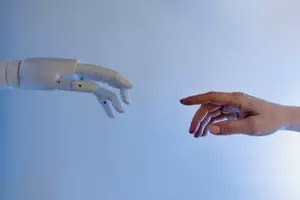Can AI outperform human intelligence in the future?
Has artificial intelligence already knocked us out? Not at all.
Artificial intelligence cannot perform ahead of humans because limited AI features have been inserted in it, different features for different tasks. The differences in which AI has not been better than humans. Know point to point: 1- ai cannot think like a human 2- There is nothing in AI like human emotions like touch, smell, love, liking, relationship feeling, crying, laughing, struggle feeling, angry, taste, smell, feeling of revenge 3- Ai can be done only by programming, it cannot do anything of its own free will. 4- The ai does not know how to forgive or rather, if there are no feelings, then how will he command them? 5- The body of ai is not flexible like a human, so that it cannot move the body properly anywhere or in any direction like a human 6- Humans can remain alive even if they do not get food for several days, but AI will become inactive immediately after fuel or battery discharge. 7- And in the end I will say that AI has been created by human mind, so AI will never be able to compete with human mind
Read full to know in detail When the term "artificial intelligence" (AI) first came into existence in the 1950s, the ultimate dream Technologies had to be developed that are smarter than humans. Since then, artificial intelligence research has experienced ups and downs, but with the emergence of machine learning, especially deep learning, artificial intelligence has finally accelerated the pace, and each success story comes with a different story of ai. Artificial intelligence systems can perform many tasks better and faster than humans. Creativity, which has long been considered an area beyond the reach of artificial intelligence systems, is also within reach. In 2017, computer software AlphaGo beat its predecessor in a Chinese board game with an unprecedented move. The program does not use human data for training, only data from games between computers. Eliminating human involvement entirely is impressive in itself, but Phase 37 is an important milestone in AI research as it ranks A. This doesn't mean we should give robots a sense of self or make them look like humans; Artificial intelligence systems are equally powerful as software embedded in mobile phones or glasses; However, we need artificial intelligence that can think and communicate like humans.
Is AI outperform human intelligence ?
not enough. Humanity's energy is elsewhere: We are increasingly newbies and quick to adapt to new responsibilities. For AI structures, this is a real stumbling block. The obstacles to deep learning face. The recent success of artificial intelligence and machine learning systems can be traced back to the development of deep learning, the most widely adopted machine learning strategy. What makes deep learning powerful is the use of artificial neural networks. These are digital neuron networks inspired by the human brain. Most of the advances in artificial intelligence in the last decade have been achieved through this technology. In the end, it's still just pattern recognition. You can map input to output. But they cannot justify the decision. One of the last two editions has won the Grand Prize, a $1 million research grant. Last year's record was about five and a half minutes. One thing that AI systems struggle with in real-world conversations is their ability to understand context. If we want artificial intelligence to be useful digital assistants, they must be able to observe, analyze and understand the environment in order to actively support them in real time. Tell us what we really mean. If pronounced in different tones, the same sentence can have completely different meanings. When human AI joins the labor market despite the tremendous progress we've made, we've only scratched the surface of AI. We have laid a solid foundation for deep learning, but for human AI, we need additional building blocks. Thinking Like a Human: Where Deep Learning Hits a Wall The current success in AI structures and machine learning can be attributed to the emphasis on the rise of deep learning, which is known to be the most commonly used system learning strategy. What makes deep learning effective is the use of artificial neural networks, that is, networks of digital neurons created by studying the human brain. Most AI breakthroughs with the last decade were enabled through this technology. Nevertheless, with the ending, this is still just a sample validation. They can map inputs to outputs, although they still cannot induce nearly all choices. Learning and decision making technology is just a black box for us and for AI right now.
 |
| Photo by Tara Winstead from Pexels |
एक टिप्पणी भेजें